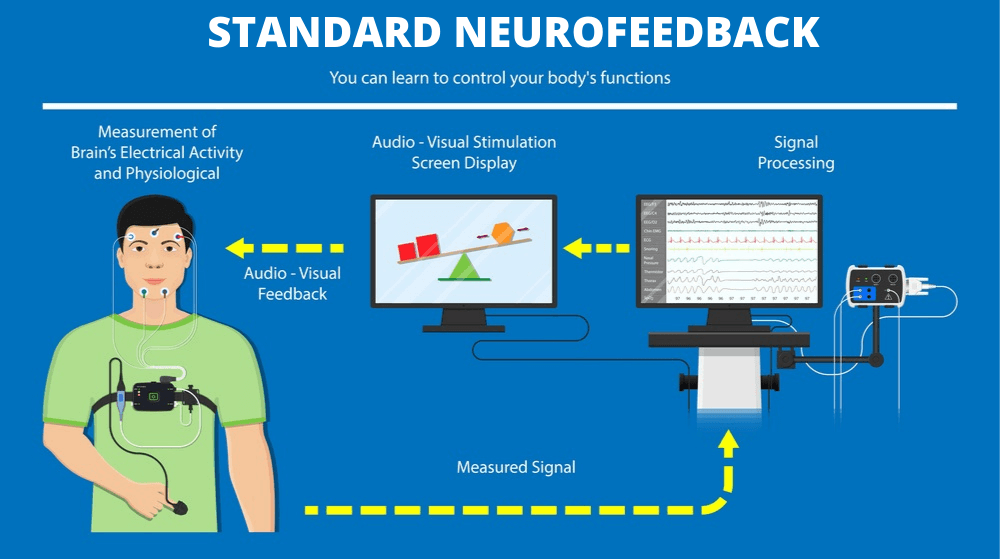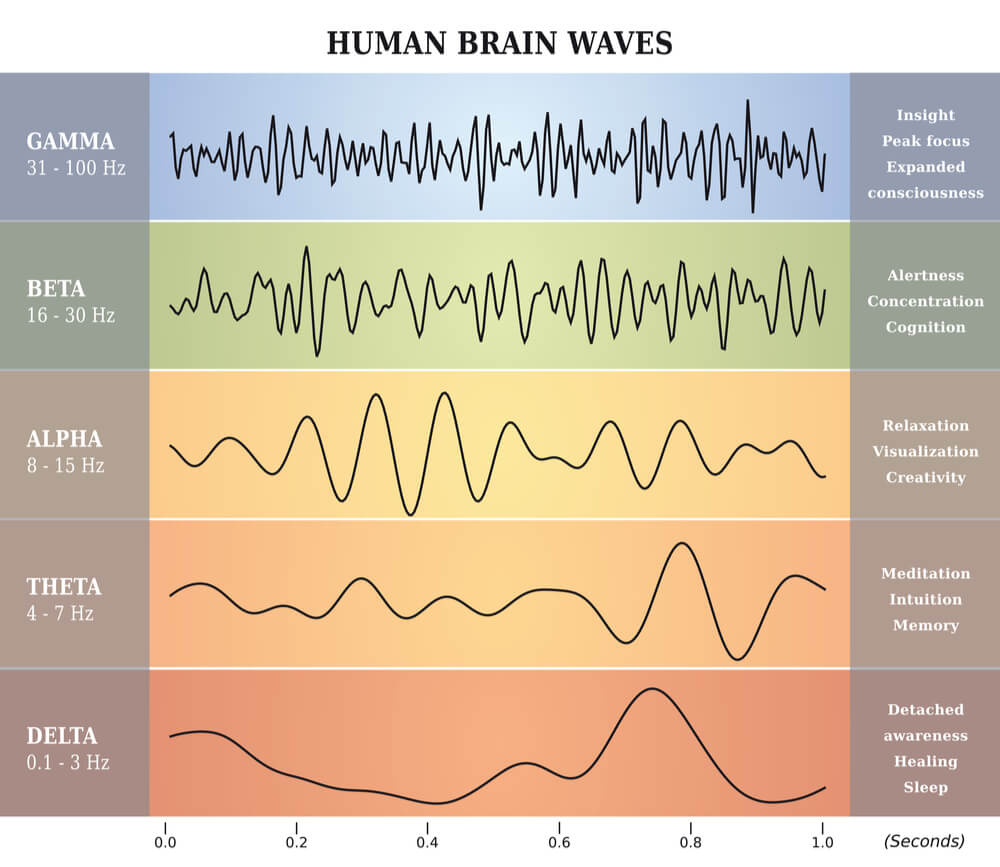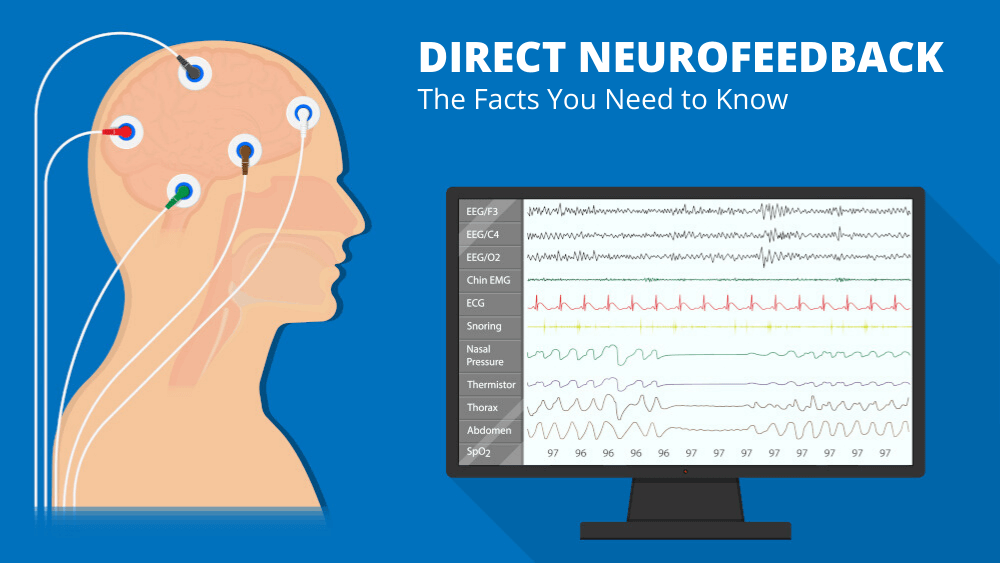 |
Dr. Loy Anderson, M.D. Functional Medicine Doctor Direct Neurofeedback Expert |
What is it? | How does it work? | Benefits | Side Effects
You had a stressful day at work. But, during the drive home you were able to think things through, listen to a bit of music, and you begin to feel the stress dissipate.
But, as soon as you get home, you find a huge mess the dog made in the bathroom, your kid is having a homework crisis, and your spouse forgot to pick up the milk…again. Suddenly, the stress you were feeling at work comes rushing back and you snap at everyone in the house. Your day to day stress, which used to be manageable, seems to be taking over your life.
This over the top reaction is happening more and more. You are stuck in an eternal pattern of getting stressed then taking it out on others, which in turn just stresses you out more. You want to stop, but feel stuck in this cycle.
Excessive stress, anxiety, depression, ADD/ADHD, post-traumatic stress and other mental health problems may have completely different causes, but they all have one thing in common; frozen or repeating dysfunctional neural patterns. In order to get the brain out of these patterns, there has to be a disruption to the stress cycle.
Recent development in biofeedback called Direct Neurofeedback technology can help the brain re-establish healthy neural patterns, providing hope for those who suffer from unending stress or other chronic mental health problems.
In this article, I will share how Direct Neurofeedback works, what results you should be expecting, common benefits and possible side effects.
What is Standard Neurofeedback?

Simply put, neurofeedback technology allows you to control certain responses in your body or in your brain. This works by:
- Placing sensors on the scalp of the patient.
- The sensors send data from the electrical activity of your brain to a computer program.
- Those results are observed on a monitor by the patient. This “neuro” feedback allows you to “see” the results of your thinking.
- You are “learning” how to shift your brainwave patterns; the patterns coming from the brain are altered by you, which influences that patterns that are picked up by the sensors. As your brain changes, so does the feedback.
- With the power of this feedback, you can re-train your brain to react differently to various situations.
Neurofeedback, often coupled with other treatment methods, has been found to be effective for concentration, mood, and most all for relaxation. Other neurological and psychiatric symptoms usually improve as well.
Standard neurofeedback does have some drawbacks, however. The process can be time-consuming, taking 30-45 minutes per session. Frequently it can take 5-10 sessions or more to begin noticing a change. 40-60 sessions or more are typically required for a full course of treatment.
Neurofeedback also requires the patient to be fully engaged in the process; you have to pay attention, concentrate and relax in order to re-train the brain.
New discoveries in the area of brain wave modification have led to the development of a new technique called Direct Neurofeedback. This method simplifies and shortens the whole process of changing the brain.
Direct Neurofeedback
The Direct Neurofeedback method measures the electrical activity in the brain using the same sensors and basic equipment that are used in standard neurofeedback. Based on your unique brain activity, it sends a tiny patient-specific signal hundreds of times weaker than a cell phone back to the brain. This signal “disentrains” the brain and allows it to re-organize itself and normalize dysfunctional patterns. No actual “training” is involved.
In standard neurofeedback there is no signal going back to the brain. That is a fundamental difference in the functioning of Direct vs standard neurofeedback. Just like you reboot a frozen computer and let it restart itself, the signal going to the brain helps the brain get out of unhealthy “frozen” patterns.
A visual metaphor we use is a palm tree facing a strong wind. The branches move and bend as it moves in the wind. But if one branch gets stuck, what happens? The branch can no longer move freely and becomes much more susceptible to breakage. What do we do? Generally, we shake the trunk until the branch is free. You are not treating a single stuck branch, you are shaking the whole tree.
Similarly, when you are experiencing chronic stress or trauma, the brain can get stuck in an unhealthy pattern. Direct Neurofeedback disrupts the abnormal pattern in the brain so the brain can go back to a ready state of resilience. That is how multiple symptoms can be addressed at the same time.
This approach has turned out to be very effective for many symptoms related to mental health by allowing the brain to “forget” dysfunctional patterns and learn healthy new ones.
Sessions are very short, some may only last a few minutes. Roughly 85-95% of the patients we have treated have had significant improvements in their symptoms after just 1-2 sessions. Fifteen to 20 sessions are usually needed to optimize and maintain the results.
Keep in mind that the power of this signal is so low that you cannot even detect it. In fact, it’s about 300 times less than your cell phone or just a AA battery.
How Does Direct Neurofeedback Work?

The signal that is sent back to the brain works on the whole nervous system, largely through the autonomic nervous system which is part of the peripheral nervous system. The autonomic system has 2 separate branches—the sympathetic branch, or the “fight or flight” response and the parasympathetic branch, known as homeostasis or the rest, relax and recover response.
The autonomic nervous system has branches that go to every organ in the body. That’s because the “fight or flight” response (or it’s opposite) has to effect essentially immediately in a time of threat and danger. Without such a rapid response we would not have survived as a species.
Similarly, Direct Neurofeedback influences the entire body very quickly. That probably accounts for how rapid the response we see during a session. Influencing the autonomic nervous system does not account for all the changes seen, however. For example, improvements in post concussive syndrome and cognitive changes, but it’s a good starting place.
In our office, we use system of Direct Neurofeedback owned and developed by Dr. David Dubin, M.D.
During the session you can expect:
- Sensors to be placed on the scalp to measure the dominant wave pattern frequency of each patient’s brain.
- The electrical activity of the brain is captured using an EEG (electroencephalogram) just like the electrical activity of the heart generates an EKG (electrocardiogram).
- You sit for roughly 30 seconds while your brainwaves are recorded.
- A very weak, imperceptible signal is sent back to the brain, disrupting the pathways and patterns that your brain has become stuck in.
Direct Neurofeedback works on a positive feedback loop, which means that it continues sending messages based on your individual brain activity. It adjusts and tailors the signal sent out in response to the active change occurring in your own brain waves. The process doesn’t affect your unique ways of thinking, personality, memories or anything like that. It simply helps to normalize the electrical signals in your brain, so that you are able to move past trauma or unhelpful stress-related patterns.
Benefits of Direct Neurofeedback
While Direct Neurofeedback by itself is not a medical treatment and is not a substitute for effective standard medical care, it has been shown to reduce symptoms in a wide range of conditions, including:
- Anxiety
- Depression
- Post-traumatic stress disorder
- ADD/ADHD
- Substance abuse and addictions
- Autism
- Sleep
- Traumatic brain injury
- Stress management
- Athletics performance
What Results Should I Expect?
After a session, most people feel more alert and yet calmer, like waking up from a good night’s sleep. Some people notice colors and sounds more vividly. Your initial improvements will usually be temporary, so continued treatment will be needed for the best results. Overall, you’ll likely achieve optimal results that stick after 20-25 sessions. Some people need an occasional “tune-up” a few times a year.
Side Effects of Direct Neurofeedback
Direct Neurofeedback is very safe with few side effects reported. Most symptoms are related to mild overstimulation in early sessions and are generally resolved within minutes to hours. With overstimulation, you may feel:
- Tired
- Wired, “jittery” (easily excitable)
- “Spacey”, or lightheaded
- Headache
- Temporary flare-up of presenting symptoms
- Changes with sleep, more vivid dreams.
These discomforts can be minimized or avoided by starting slow in the early sessions and learning about the individual response of each patient. Based on the unique way the patient responds, adjustments can be made.. This is also why it’s very important to receive Direct Neurofeedback from a qualified clinician.
Final Thoughts
In functional medicine, we look at the entire person: mind-body-soul to heal the whole system. Based on my experience, Direct Neurofeedback complements functional medicine treatment and helps many patients get better faster. In fact, I have seen cases of brain injuries where the direct neurofeedback has been the missing link and made a big difference in their progress.
If you are struggling with stress, anxiety, depression or other mental health problem that are impacting the rest of your life, Direct Neurofeedback may very well help. Use the information in this article to educate yourself about these options and share with your physician to see if this treatment may be a good option for you.

